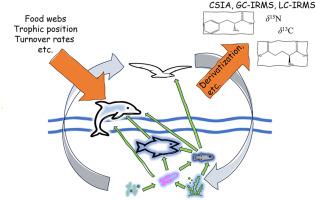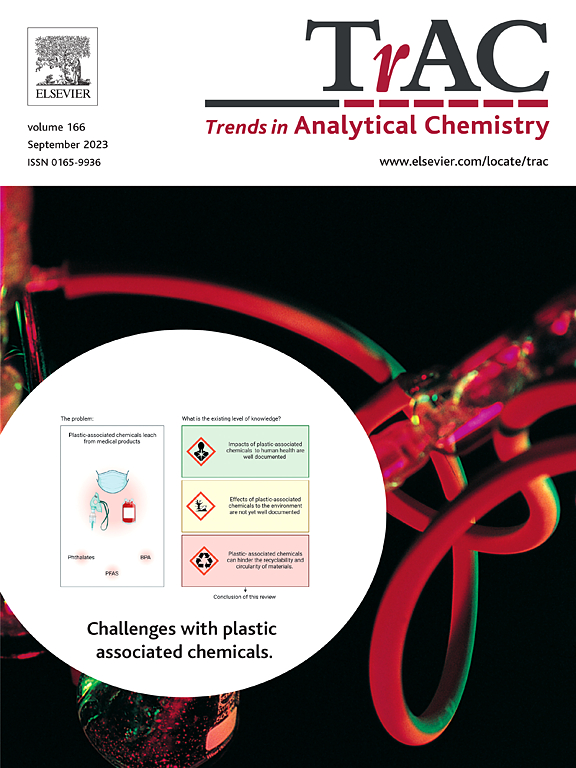水生系统氨基酸的特定化合物同位素分析--问题、挑战和解决方案:综述
IF 11.8
1区 化学
Q1 CHEMISTRY, ANALYTICAL
引用次数: 0
摘要
对单个氨基酸(AAs)进行化合物特异性同位素分析,是描述水生系统资源流动和转化特征的一种很有前途的方法。本综述深入探讨了有关水生生态系统中氨基酸的两个关键研究领域。首先,碳同位素分析用于探索合成 AAs 所需的碳源;其次,氮同位素分析用于阐明生态系统基线和生物的营养动态。令人惊讶的是,文献中对过去十年中 AAs 同位素分析的局限性或面临的关键挑战的讨论十分有限。为了弥补这一空白,本综述重点讨论了在方法开发、样品制备和技术方面(包括仪器设计)遇到的挑战,以及 AAs 的 δ13C 和 δ15N 分析。为提高准确性和可靠性提出了建议。综述还强调了全面理解和详细方法对于应对水生系统 AA 同位素分析过程中的挑战所具有的重要意义。本文章由计算机程序翻译,如有差异,请以英文原文为准。

Compound-specific isotope analysis of amino acids for aquatic systems – Problems, challenges, solutions: A review
Compound-specific isotope analysis of individual amino acids (AAs) is a promising method for characterizing resource flow and transformation in aquatic systems, encompassing microbial domains to macroscopic consumers. This review delves into two key areas of research concerning AAs in aquatic ecosystems. Firstly, carbon isotope analysis is employed to explore carbon sources assimilated for AAs synthesis, and secondly, nitrogen isotope analysis is used to clarify ecosystem baselines and trophic dynamics of organisms. Surprisingly, literature provides limited discussions on the limitations or critical challenges faced during AAs isotope analysis over the past decade. To address this gap, this review focuses on challenges encountered in method development, sample preparation, and technical aspects, including instrumental design, and δ13C and δ15N analysis of AAs. Recommendations are provided to increase the accuracy and reliability. The review also highlights the significance of comprehensive understanding and detailed methodology to address challenges during AA isotope analysis in aquatic systems.
求助全文
通过发布文献求助,成功后即可免费获取论文全文。
去求助
来源期刊

Trends in Analytical Chemistry
化学-分析化学
CiteScore
20.00
自引率
4.60%
发文量
257
审稿时长
3.4 months
期刊介绍:
TrAC publishes succinct and critical overviews of recent advancements in analytical chemistry, designed to assist analytical chemists and other users of analytical techniques. These reviews offer excellent, up-to-date, and timely coverage of various topics within analytical chemistry. Encompassing areas such as analytical instrumentation, biomedical analysis, biomolecular analysis, biosensors, chemical analysis, chemometrics, clinical chemistry, drug discovery, environmental analysis and monitoring, food analysis, forensic science, laboratory automation, materials science, metabolomics, pesticide-residue analysis, pharmaceutical analysis, proteomics, surface science, and water analysis and monitoring, these critical reviews provide comprehensive insights for practitioners in the field.
 求助内容:
求助内容: 应助结果提醒方式:
应助结果提醒方式:


